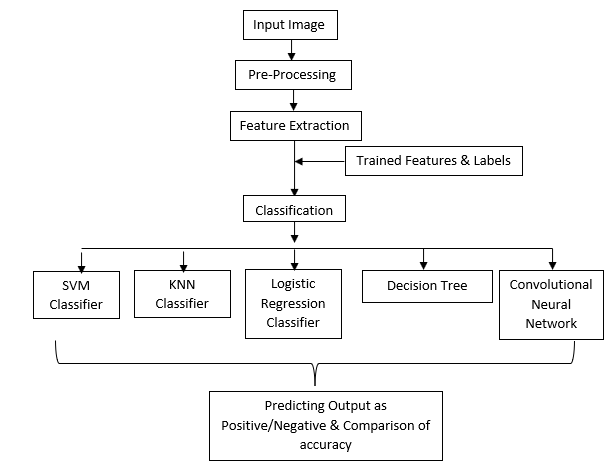Diabetic Tongue Classification Using Various Classifiers
Objective
Diabetic tongue is identified using various classifiers like logistic regression, decision tree, SVM, KNN, CNN and their accuracies are compared/analyzed.
Abstract
There are several applications for Machine Learning (ML) and Deep Learning (DL), the most significant of which is in the medical field. Image classification is one of the tasks most frequently carried out and so-called Intelligent Systems.
Classifying the diabetic tongue these days becomes a big challenge. Thus, a large number of techniques have been developed based on Artificial Intelligence. This work describes various classification algorithms (KNN, SVM, Decision Tree, Logistic Regression, CNN) and the recent attempt for improving classification accuracy.
Keywords: Classifiers, Machine Learning, Deep Learning, Diabetic Tongue
NOTE: Without the concern of our team, please don't submit to the college. This Abstract varies based on student requirements.
Block Diagram

Specifications
Software: Matlab 2018a or above
Hardware:
Operating Systems:
- Windows 10
- Windows 7 Service Pack 1
- Windows Server 2019
- Windows Server 2016
Processors:
Minimum: Any Intel or AMD x86-64 processor
Recommended: Any Intel or AMD x86-64 processor with four logical cores and AVX2 instruction set support
Disk:
Minimum: 2.9 GB of HDD space for MATLAB only, 5-8 GB for a typical installation
Recommended: An SSD is recommended A full installation of all MathWorks products may take up to 29 GB of disk space
RAM:
Minimum: 4 GB
Recommended: 8 GB
Learning Outcomes
- Introduction to Matlab
- What is EISPACK & LINPACK
- How to start with MATLAB
- About Matlab language
- Matlab coding skills
- About tools & libraries
- Application Program Interface in Matlab
- About Matlab desktop
- How to use Matlab editor to create M-Files
- Features of Matlab
- Basics on Matlab
- What is an Image/pixel?
- About image formats
- Introduction to Image Processing
- How digital image is formed
- Importing the image via image acquisition tools
- Analyzing and manipulation of image.
- Phases of image processing:
- Acquisition
- Image enhancement
- Image restoration
- Color image processing
- Image compression
- Morphological processing
- Segmentation etc.,
- How to extend our work to another real time applications
- Project development Skills
- Problem analyzing skills
- Problem solving skills
- Creativity and imaginary skills
- Programming skills
- Deployment
- Testing skills
- Debugging skills
- Project presentation skills
- Thesis writing skills





 Paper Publishing
Paper Publishing
